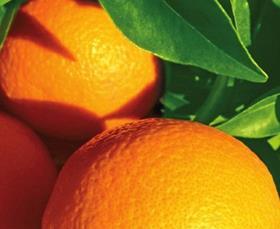
Australian orange volumes are set to bounce back in the upcoming season, though fruit sizes could be slightly smaller than usual, according to initial reports from regional citrus bodies across the southeast of the country.
Forecasts for the Riverina, Murray Valley and Riverland regions suggest overall tonnages will be higher than last year, even though fruit size is smaller than usual for this time of year, according to the Weekly Times.
Navel production for the Murray Valley region is forecast to reach 90,172 tonnes, up 43.7 per cent on last season, while valencia volumes are expected to come in at 22,592 tonnes, up nearly 34 per cent. Murray Valley Citrus Board industry development officer Mary Cannard told the Weekly Times that last year's crop in the region was very light, especially on Late Lane navels, due to hot weather during the fruit set, which caused significant fruit drop.
In the New South Wales Riverina region, growers are expecting to pick 60,000 tonnes of navels, up 4,000 tonnes on last year, according to Riverina Citrus executive officer Peter Morrish. 'There is an excellent number of fruit on trees, which is slightly smaller than last season,' Mr Morrish told The Weekly Times.
The majority of the Riverina crop is expected to fall within the preferred count range, despite the greater percentage of smaller sizes, he added.
The Riverina is Australia's biggest growing region for Valencia oranges - and even though volumes are forecast to decline by 8.3 per cent this year, they are still expected to come in at 110,000 tonnes, 3 per cent below the five-year average.
Meanwhile in South Australia's Riverland region, the navel crop is forecast to bounce back to 70,000 tonnes, which marks a 27 per cent increase on last year's drought-affected yield of 55,000 tonnes, according to SA Citrus executive officer Andrew Green.
Mr Green said fruit sizes for Navelinas were about 4mm smaller than usual and Washington and Late Lane navels were about 2mm behind expectations, according to the Weekly Times. But he pointed out that final sizes would be determined by temperatures, rainfall and by how much growers thinned fruit to boost sizing at harvest.



